VVAM Newsletter 67 – 1997
FRIENDS OF THE AIRBORNE MUSEUM
Editors:
Drs. R.P.G.A. Voskuil
C. van Roekel
G.H. Maassen jr.
Newsletter No. 67, August 1997
Translated by Cathrien and Peter Clark
Representative in Great Britain: Mr. E.E. Shaw, 298 Totnes Road Paignton – Devon TQ4 7HD Tel. 0803-553616
New ‘Airborne Soldier’ statuette
Ten years ago a statuette of an ‘Airborne Soldier’ was produced specially for our society of which about one hundred were sold. Since then no such work of art has been available for sale despite continued interest and demand, and thus interest has prompted the Society into commissioning the design of a new statuette.
Chris van Roekel and the British designer (and veteran) Peter Hicks worked for a year on a design that would meet our stringent demands. The final result, made in beautiful, bronze-coloured synthetic resin, is a detailed reproduction of a British Airborne soldier from September 1944.
Peter Hicks is one of the top artists in this field and, although no longer active in his studio, we are delighted that he saw it as a challenge to exercise his special talent once more to create an ‘Airborne Soldier’.
Naturally enough this little artwork is not cheap. Even though the Society is offering the statuette at cost price it still works out at 250 guilders. We are well aware that many of you will find this a large sum to pay out in one go, and for this reason we have come up with a financing scheme, exclusively for members who live in the Netherlands, whereby payment can be spread over five months. All you have to do is send us five completed and signed cheques for 50 guilders and we will see to it that they are cashed in sequence at the end of each month. The statuette will be sent to you on receipt of the first payment, postage and packing being at your expense, to be paid on delivery.
Should you wish to make use of this scheme, just send your five cheques to the treasurer, E. van der Meiden, St. Bernulphusstraat 8, 6861 GS, Oosterbeek. Of course there is nothing to stop you paying the full amount by making out a cheque payable to the Society of Friends of the Airborne Museum’s giro number 4403641, marked ‘Airborne Soldier’.
Although the statuette is not cheap, this is an opportunity you should consider seriously, given its value. Orders will be dealt with as quickly as possible and in sequence.
(E. van der Meiden)

The new para statuette, specially designed and made for our Society by Peter Hicks. It is produced in bronze¬coloured synthetic resin and is approximately 25 cm tall. (Photo: W. de Ruyter)
Battlefield Tour
A special battlefield tour is to be held on Saturday 13 September next. This is principally intended for members wishing to obtain a total picture of the battle area at Arnhem. Quite often, those not living in the vicinity of the capital of the province of Gelderland are not in a position to make a tour by
 Chairman J. Smits thanks retiring treasurer R. Fennema during the AGM on 26 April 1997for all the work he has done for the Society.
Chairman J. Smits thanks retiring treasurer R. Fennema during the AGM on 26 April 1997for all the work he has done for the Society.
(Photo: Berry de Reus)
themselves, and to visit the sites which played a part in the Battle of Arnhem.
The battlefield tour is being organised on the initiative of Mr W. Boersma of the Airborne Museum ‘Hartenstein’. Fie will also lead the tour, assisted by a number of guides. The programme is as follows:
9 am -10 am: reception of participants, with coffee, in the Airborne Museum, Utrechtseweg 232, Oosterbeek.
10 am -11 am: the scale model of the battle area will be used to explain the tour to those taking part (in groups). Photographs of locations to be visited during the excursion will be viewed in the museum.
11 am -12 noon: a walk through the Hartenstein Park, past the tennis courts, to the Tafelberg. If possible, the interior of this building will also be inspected. Participants then walk to the Schoonoord restaurant.
12 noon -1 pm: lunch at the Schoonoord, Pietersbergseweg 4, Oosterbeek.
1 pm – 4.30 pm: battlefield tour by bus taking in the following points: dropping zone ‘X’, landing zone ‘S’, the spot where the Reconnaissance Squadron was ‘ambushed’ at Wolfheze, the Bilderberg area, Westerbouwing, the route of Lieutenant-Colonel John Frost’s 2nd Battalion The Parachute Regiment through Oosterbeek and Arnhem, the Rhine bridge, Bovenover (including the St Elisabeths Hospital), the Old Church in Lower Oosterbeek and the Airborne Cemetery.
4.30 pm – 5 pm: discussions in the Schoonoord. Alterations to the programme are possible.
The number of participants is limited to 47 maximum and 35 minimum. The cost is 42.50 guilders. This price includes coffee on arrival at the museum, lunch, the bus tour and an excursion map. You can reserve a place by paying the amount into the Society of Friends of the Airborne Museum’s giro account number 4403641, under the heading ‘battlefield tour’. This stun should be received by 9 September at the latest. In view of the short period of time between receipt of this Newsletter and the closing date for entries, would-be participants are kindly requested
to transfer the money as soon as possible! Just ring Mr Boersma if you nevertheless have any doubts about your payment having been received on time. Reservations will be dealt with in the order of receipt of the giro transfers. Should the maximum permissible number of participants be exceeded, only the ‘unlucky’ ones will be notified.
All further information can be obtained from Mr Boersma on (026) 3337710 (Airborne Museum) or (0318) 639633 (private).
Royal recognition for Jan Hey
On 29 April last Jan Hey was admitted to the ‘Order of Oranje Nassau’. He was awarded this royal honour in recognition of his efforts over the years to trace servicemen registered as ‘missing’ during the Second World War. He is internationally recognised as an expert on the subject of war graves.
Jan Hey is also the man who compiled the ‘Roll of Honour, Battle of Arnhem, 17-26 September 1944’, published by our Society in 1986. That this standard work fills a need is shown by the fact that a 3rd edition was published in 1993.
It is wonderful to think that the work of Jan Hey, member of our society and, himself, always the most modest of men, has at last been recognised by higher offices.
On behalf of the management and members of the Society of Friends of the Airborne Museum, we would like to extend our warmest congratulations to Jan on his well-deserved honour.
Gift of battledress
At the beginning of May this year, Mr PJ. Southwell from England presented the Airborne Museum with his battledress.
In September 1944 he was a driver attached to 7 Section, C Troop, 1st Airborne Reconnaissance Squadron. On the afternoon of Tuesday tire 19th he was part of a recce patrol that went from Wolfheze to the Amsterdamseweg via Kruislaan. They came under German fire near the ‘Planken Wambuis’ restaurant. As a result, Southwell and a number of others were taken prisoner. Just two C Troop jeeps and seven men managed to get back to Wolfheze. (See ‘Remember Arnhem’ by John Fairley, pages 85 and 96-101).
Southwell served earlier in North Africa and was one of the two squadron members to wear the ‘Africa Star’.
This is the first Reconnaissance Squadron uniform that the Airborne Museum ‘Hartenstein’ has been able to add to its collection.
Exhibition 1998
Although it seems a long way off, the Airborne Museum is already making preparations for the 1998 exhibition. The chosen subject is ‘The history of the military prisoners-of-war from the 1st Airborne Division’. This is a subject that, up to now, has received very little attention. There are plenty of stories known, but the matter has never been gone into systematically.
It is intended to set up a workgroup for the exhibition. Activities will include the collation of available information and photographs, inventarisation of the material, the writing of a scenario, the make-up of the exhibition within the available space, the production and translation of texts and, finally, the set up of the exhibition itself. The group will also be responsible for publicity and, as you can see, anyone wishing to help has a wide selection of interesting work from which to choose. Both the Airborne Forces Museum in Aidershot and the Imperial War Museum in London have agreed to co-operate.
The aimed-for date for the setting up of the workgroup is the end of September. The Airborne Museum ‘Hartenstein’ would like to appeal to interested members of the Society to take part in this project. Further information can be obtained from Mr W. Boersma, Binnenhof 38, 6715 DP Ede, tel. (0318) 639633 or (026) 3337710 (Airborne Museum).

Two servicemen from Hie Dutch Army’s Recovery and Identification Service gather together the remains of the dead British soldier found on 7 July 1997 during excavation work along the Van Lennepweg in Oosterbeek. (Photo: Berry de Reus)
Remains of British soldier found
On 7 July 1997 the remains of a British serviceman were unearthed during excavation work along Van Lennepweg in Oosterbeek. The Dutch Army’s Recovery and Identification Service was immediately alerted and members from that unit arrived to complete the exhumation.
In September 1944 a defensive line manned by 1st Battalion The Border Regiment was located in the region of the discovered remains. One of the documents that may be of help in identifying the soldier is a sketch map of the Van Lennepweg area, drawn by a veteran after the war. This map shows the British positions as well as a number of places where soldiers were known to have been killed. It also indicates the spot on Van Lennepweg where the above mentioned soldier died.
Only when identification has been completed will the name of the missing man be made public.
The remains of six soldiers have been found in the Oosterbeek area in the last four years. Alas, due to a disgraceful lack of co-operation on the part of the British authorities, three of these have yet to find their final resting place in the Airborne Cemetery in Oosterbeek. We might add that the longest outstanding discoveries date back to February 1994!
‘Traitor of Arnhem’
Some time ago a new book about the Battle of Arnhem appeared on the scene entitled ‘Traitor of Arnhem’. In it the author, Allan A. Samm, describes his personal experiences during his military training, in North Africa, Italy and during the Battle of Arnhem.
Samm, who served with the Reconnaissance Squadron, reached the western outskirts of Arnhem but was forced to withdraw to Oosterbeek on 19 September 1944. There he was involved in the fighting around the Hartenstein until the end of the battle. He was among the lucky ones who managed to escape across the Rhine on the night of 25/26 September.
The book’s title refers to the Dutch double spy Christiaan Lindemans, alias King Kong, whose past is, once more, summarised in the final chapter.
‘Traitor of Arnhem’ was published in 1996 by Minerva Press in London. The ISBN number is 1 86106 175 5 and the price in the UK is 7 pounds 99.
Appeal
The Publications Workgroup recently came into being within the Friends’ Society, its aim, to select and take care of items to be published by the Society. Many of our members study specific aspects of the Battle of Arnhem. This often involves a military subject, events in a particular area or equipment used by the soldiers, and the results of such studies can serve as a star-ting point for a publication.
At the moment the workgroup is busy making an inventory of possible subjects and we would like to hear from members who have manuscripts (self-written or not) that could be, and be allowed to be, published. Of course, it should be mentioned that the sending in of a manuscript does not automatically lead to its being published by the Society. This depends on such things as the subject, the length and quality of the manuscript, etc.
Applications regarding potential publications should be sent to, Society of Friends of the Airborne Museum, ‘Publications Workgroup’, C/O Utrechtseweg 232, 6862 AZ Oosterbeek, and should be accompanied by a short description of the material concerned.
(M. Peters)
Excursion guide still available
There are still a few copies available for sale of tire guide for the theme day excursion held last June 7. The theme was the battle along the western edge of the British Perimeter in September 1944.
It costs 7.50 guilders plus 2.50 guilders postage if the guide has to be sent by post. Those interested should contact Eugene Wijnhoud, Bronbeeklaan 36, 6824 PH, Arnhem, ‘phone (026) 3610208.
‘Onbekend Herkend’ (The Unknown Identified) a success!
On Saturday 27 June 1997 an information day on material from the Second World War was held in the Airborne Museum. This was the second time such a day has been held. About thirty people turned up at the museum with items and documents for investigation by messrs Boersma and Takens. Although there were no spectacular finds, those on offer were extremely varied. Of great interest was a small collection of poems that was printed and distributed by the Underground between September 1944 and May 1945. A lady found the booklet on the Ginkelse Heide near Ede at the end of the war. A sterilisation set left behind by a German doctor in the Roermond area was given to the museum as well as a bag containing ground signal panels and a thermos flask from an aircraft.
It is intended to hold a similar information day in a few years time.
(W. Boersma)
‘Airborne Battle Wheels’ weekend
The ‘Airborne Battle Wheels’ society will be holding a get-together in Oosterbeek from 18 to 21 September 1997. The members of the club, inaugurated in 1995, collect and restore British military vehicles from World War II, with the emphasis on the transport used by the British Airborne divisions.
Following the parachute drop on the Ginkelse Heide on Saturday 20 September next, a large number of the society’s members will make a trip in and on their mobile possessions through Arnhem, Oosterbeek and environs. This tour will end at the Airborne Museum ‘Hartenstein’ driveway, where interested parties will be able to view and photograph these historic vehicles between the hours of 4 pm and 5 pm (give or take a few minutes).
The grave of Bakhuis Roozeboom no longer ‘unknown’
For almost 52 years he lay in the Airborne Cemetery in Oosterbeek under a headstone bearing the text, ‘A Soldier of the 1939-1945 War, Known Unto God’: August Bakhuis Roozeboom, a Dutch Commando who died at Arnhem.
This Dutch Canadian served wifh No. 2 Dutch Troop, No. 10 Inter-Allied Commando, and landed near Wolfheze with the 1st British Airborne Division in September 1994. He was killed during an engagement with the enemy close to the railway viaduct over the Benedendorpsweg in Oosterbeek. On 20 September he was buried in a field grave near the tennis courts behind the Hartenstein Hotel. His personal identification details were lost when his remains were transferred to the Airborne Cemetery after the war.
Some time ago it became evident from a meticulous investigation by Jan Hey that August lay in grave number I.A.6 as an unknown Canadian soldier. Eventually the Commonwealth War Graves Commission agreed with the conclusions in Jan Hey’s report. A new headstone was made, put in position and blessed during a short service on 5 May last. Dutch members of Bakhuis Roozeboom’s family attended the service along with twenty veterans from No. 2 Dutch Troop.
 A short service was held in the Airborne Cemetery, Oosterbeek on 5 May 1997 at the grave of Dutch Commando August Bakhuis Roozeboom. His grave had just been given a new headstone.
A short service was held in the Airborne Cemetery, Oosterbeek on 5 May 1997 at the grave of Dutch Commando August Bakhuis Roozeboom. His grave had just been given a new headstone.
(Photo: Robert Voskuil)
Obituary: Jan Peelen
Jan Peelen passed away at his home in Zaandijk at the end of April 1997. He was 86 years of age. During the war he lived in the village of Renkum, where he was an active member of the Resistance. He was very closely involved with operation ‘Pegasus I’, the operation in which 120 allied servicemen managed to escape across the river Rhine at Renkum during the night of 22 October 1944. Among many other tilings Jan Peelen made sure that the soldiers were provided with weapons for this enterprise. Despite the fact that the area was crawling with Germans he transported the arms on his ‘butcher’s’ bike to the rendezvous in the woods, where the Allied soldiers were getting ready for their journey over the Rhine. In 1949 Jan was made a ‘Knight in the Military Order of William’ in recognition of his Resistance work. He also received many high British honours.
His experiences were described in a booklet written by his brother, GJ. Peelen. It appeared just after the war and was called : “’t Begon onder melkenstijd” (It began during milking time). The booklet was reprinted many times.

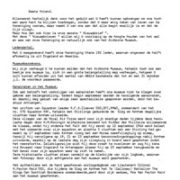
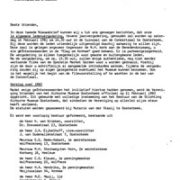
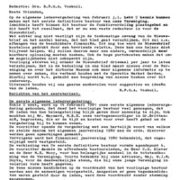
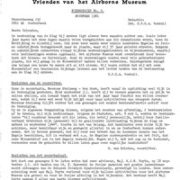
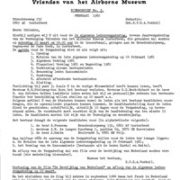
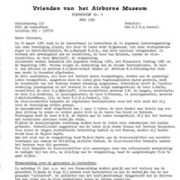
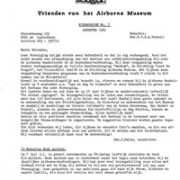
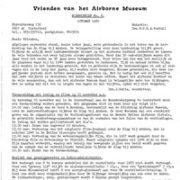
Plaats een Reactie
Vraag of reactie?Laat hier uw reactie achter.